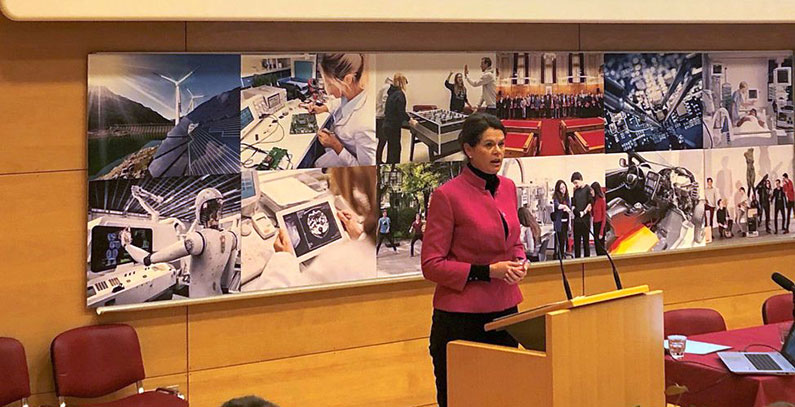
Photo: Minister Alenka Bratušek presented NECP at the Faculty of Electrical Engineering in Ljubljana (MZI)
Slovenia intends to decrease the use of coal by 30% by 2030, while the phaseout is planned by 2050 at the latest, according to the country’s draft national energy and climate plan (NECP), which defines energy policy for the next decade.
The document was presented by Infrastructure Minister Alenka Bratušek at the Faculty of Electrical Engineering in Ljubljana. She said the NECP would be adopted by the end of the month, according to the ministry’s website.
The draft is also on public consultation from January 28 until February 16.
NECP sets targets for reducing and phasing out coal
Bratušek said the updated draft includes improved targets in all areas, adding that NECP sets targets for cutting coal utilization 30% by 2030 and phasing it out.
The fifth unit in Šoštanj thermal power plant will be stopped
In the meantime, Slovenia will shut down the fifth unit in Šoštanj thermal power plant and stop using imported coal in Ljubljana Power Station, which also produces heat, the minister said.
She didn’t mention the schedule for coal phaseout at the presentation, but the 2050 target is mentioned in the draft.
The decision on the second unit of Krško nuclear power plant will be adopted no later than 2027
Bratušek has announced the use of new nuclear energy options would be examined and that the decision on the second unit of Krško nuclear power plant is to be adopted no later than 2027.
The draft proposes a gradual reduction of fossil fuel subsidies to zero.
Some challenges remain, and one of the largest is the use of hydropower.
The construction of HPPs on the middle course of the Sava river is on hold
The draft doesn’t envisage the construction of hydropower power plants (HPP) on the middle course of the Sava river within a decade, mainly due to difficulties in finding the right location, she said.
Bratušek said she is convinced, though, it is possible to build and operate HPPs in harmony with nature.
Slovenia needs to find a way to promote the use of renewable energy sources in protected areas, she said, adding that the country must increase investment in research and development.









Be the first one to comment on this article.